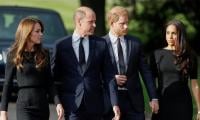Indigenous Indian education
India was portrayed by the colonisers as a dark and mysterious land where people were illiterate and uncultured. The positional superiority enjoyed by the British enabled them to construct a glorified identify for themselves and a stigmatised identity for the ‘others’.
Macaulay, in his ‘Minute on Education’ (1835), claimed that “a single shelf of a good European library was worth the whole native literature of India and Arabia”. Was India a country of illiterate people with no educational network? Is it true that it was the British who initiated the tradition of schools in India? The reality is just the opposite. There was a comprehensive network of schools in pre-British India, going back to the ancient times.
There are three major sources through which we can get some insight into Indian indigenous education. One source is the accounts of travellers who visited India and mentioned different aspects of Indian life, including the indigenous educational practices. For example, there is mention of ancient universities of Taxila and Nalanda in some travelogues. But these references are stray and sketchy.
The second source is the accounts of some native writers, who eulogised the educational practices of the past. These accounts, however, lacked reliable data and were largely driven by sentiment. The third source is some scholarly books and surveys that relied on hard data. It is thus appropriate to focus on the third source as it is relatively more objective and reliable.
Before we delve into the quantitative span of the educational network, it is important to have some idea of the nature of the schools that existed in pre-British India. Nurrullah and Naik in their seminal book, History of Education in India, divide Indian indigenous institutions into different categories — such as schools of learning and elementary schools. Schools of learning included the patshalas of the Hindus and the madressahs of the Mulims. The elementary schools included Persian schools and schools teaching in the modern Indian languages.
Now we turn to the major question of the access to education for the masses in pre-British India. To respond to this question, we need to refer to some surveys carried out in Madras, Bombay, and Bengal. In 1822, an inquiry on indigenous education in Madras was carried out on the orders of Sir Thomas Munro. According to this study, for the population of 12,850,941 there were 12,498 schools and colleges. Thus there was one school available for every 1,000 of the population.
There were some disagreements about the validity of the figures. The cause of confusion in the figures was that children who were under domestic instruction were not included in the survey, except for the district of Madras. In those times, a large number of children in India were taught at home, either by ataleeq (teachers) or some literate person in the family. Most of the zameendars and rich people preferred to arrange tutors to teach children at home, instead of sending their children to schools.
In Bombay, two studies were carried out in 1823 and 1829. The first study was narrow in scope and relied on the collectors for the acquisition of data. The second study used district judges for the collection of data. According to this study, there were 1,705 schools with 35,153 pupils in the population of 4,681,735.
In Bengal, three studies about the Indian education system were conducted by William Adam Bentinck. The first report (July, 1835) was based on the review of earlier studies on Indian education. Adam referred to a Minute by a member of the General Committee of Public Instruction and inferred that there were 100,000 schools in Bengal and Behar, thus there would be a village school for every 400 people. The second report (December, 1835) contained a comprehensive survey of one thana in the district of Rajshahi. The third report (April, 1838) covered five of the nineteen districts of Bengal and Bihar.
There could be some statistical issues with the Madras and Bombay studies in terms of methodology. These studies did not include all existing schools and pupils, especially pupils under domestic guidance. In Bengal, at the time of the survey, the Indian local schools were on the decline because of the political anarchy and instability. Despite these issues, the reports gave a fair picture of Indian education. All the reports suggest that pre-British India had a comprehensive network of education and schools were available at the village level.
Prendergast, who was a member of the Bombay Governor’s Council, in his Minute of 1821 admits that: “There is hardly a village, great or small, throughout our territories, in which there is not at least one school, and in large villages more, many in every town and in large cities in every division; where young natives are taught reading, writing, and arithmetic, upon a system so economical, from a handful or two of grain, or perhaps a rupee per month to the school teacher…”
How can we compare the educational facilities available in India in pre-British times with those of European countries at that time? For this we need to refer to the Fifth Educational Report of the Bombay Society: “There are probably as great a proportion of persons in India who can read, write and keep simple accounts as are to be found in European countries.”
Sir Thomas Munro, in his report on indigenous education in Madras (1821), made such comparison and concluded that “the state of education here was higher than it was in most European countries at no very distant period.” Thus, it is just a myth constructed, strengthened and popularised by the British that pre-British India was a land of illiterate people.
The writer is an educationist.
Email: shahidksiddiqui@gmail.com
-
 Do You Have Depression Or Is It Just Monday Blues? Find Out Where Science Stands
Do You Have Depression Or Is It Just Monday Blues? Find Out Where Science Stands -
 Why Claude Is Gaining Momentum In Revolutionizing The AI Landscape
Why Claude Is Gaining Momentum In Revolutionizing The AI Landscape -
 Elon Musk Unveils Plans To Take Humanity To The Moon And Mars
Elon Musk Unveils Plans To Take Humanity To The Moon And Mars -
 Air Pollution May Play A Role In Prostate Cancer Risk, Experts Warn
Air Pollution May Play A Role In Prostate Cancer Risk, Experts Warn -
 Royal Expert Reveals Real Reason King Charles Won't Meet Prince Harry Next Week
Royal Expert Reveals Real Reason King Charles Won't Meet Prince Harry Next Week -
 Ansel Elgort Welcomes His First Baby In Secret
Ansel Elgort Welcomes His First Baby In Secret -
 Startup Aims To Brighten Night Skies With Space Mirrors
Startup Aims To Brighten Night Skies With Space Mirrors -
 Cheaper Cars, Fewer EVs: Trump Administration Shifts ‘auto Policy’ Focus
Cheaper Cars, Fewer EVs: Trump Administration Shifts ‘auto Policy’ Focus -
 Meghan Markle Takes 'breadwinner' Role In Prince Harry's California Life
Meghan Markle Takes 'breadwinner' Role In Prince Harry's California Life -
 Type 2 Diabetes Hidden Trigger In Daily Food Revealed
Type 2 Diabetes Hidden Trigger In Daily Food Revealed -
 Vertical Tabs Coming To Google Chrome
Vertical Tabs Coming To Google Chrome -
 Jane Seymour Reveals THIS Beloved Romance Was 'worst-reviewed' Movie Ever
Jane Seymour Reveals THIS Beloved Romance Was 'worst-reviewed' Movie Ever -
 European Leaders Slam Trump’s Tariff Threat Over Greenland As ‘unacceptable’
European Leaders Slam Trump’s Tariff Threat Over Greenland As ‘unacceptable’ -
 Princess Eugenie Leaves Father Andrew 'devastated' With Big Step: 't's Brooklyn Beckham Level'
Princess Eugenie Leaves Father Andrew 'devastated' With Big Step: 't's Brooklyn Beckham Level' -
 Nova Scotia Snow Storm Warning Issued As Heavy Snow Moves In
Nova Scotia Snow Storm Warning Issued As Heavy Snow Moves In -
 Vancouver Canucks 2025-26 Season: Adam Foote’s Future Under Early Scrutiny
Vancouver Canucks 2025-26 Season: Adam Foote’s Future Under Early Scrutiny



